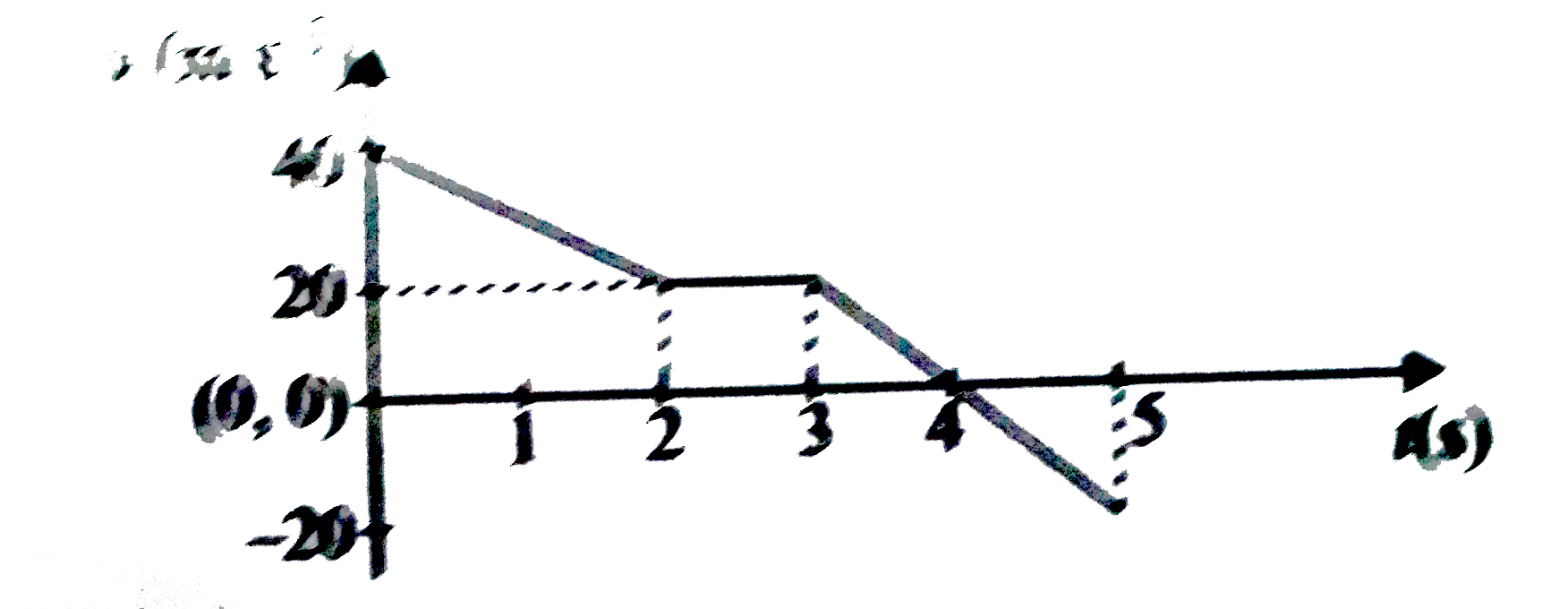A particle is falling freely under gravity. In first t second it covers distance x1 and in the next t second, it covers distance x2, then t is given by
√x2−x1g
√x2+x1g
√2(x2−x1)g
√2(x2+x1)g
The correct Answer is:A
To solve the problem of a particle falling freely under gravity, we will use the equations of motion. Let's break down the solution step by step.
Step 1: Understand the Problem
We have a particle falling freely under gravity. In the first time interval of t seconds, it covers a distance x1, and in the next t seconds, it covers a distance x2.
Step 2: Use the Equation of Motion
The equation of motion for distance s covered under uniform acceleration is given by:
s=ut+12at2
For a freely falling object, the initial velocity u=0 and the acceleration a=g (acceleration due to gravity). Thus, the equation simplifies to:
s=12gt2
Step 3: Calculate Distance x1
For the first t seconds, the distance x1 covered is:
x1=12gt2
Step 4: Calculate Distance x2
In the next t seconds, the particle has already been falling for t seconds. The distance covered in the next t seconds can be calculated by considering the total distance fallen in 2t seconds:
Total distance in 2t seconds=12g(2t)2=12g⋅4t2=2gt2
The distance x2 covered in the second t seconds is then:
x2=Total distance in 2t seconds−Distance in first t seconds
x2=2gt2−x1=2gt2−12gt2=32gt2
Step 5: Find the Relation Between x1 and x2
Now we have:
x1=12gt2
x2=32gt2
Step 6: Calculate x2−x1
Now, we can find the difference between x2 and x1:
x2−x1=32gt2−12gt2=gt2
Step 7: Solve for t
From the equation x2−x1=gt2, we can express t as:
t2=x2−x1g
Taking the square root gives:
t=√x2−x1g
Final Answer
Thus, the time t is given by:
t=√x2−x1g
We have a particle falling freely under gravity. In the first time interval of t seconds, it covers a distance x1, and in the next t seconds, it covers a distance x2.
The equation of motion for distance s covered under uniform acceleration is given by:
s=ut+12at2
For a freely falling object, the initial velocity u=0 and the acceleration a=g (acceleration due to gravity). Thus, the equation simplifies to:
s=12gt2
For the first t seconds, the distance x1 covered is:
x1=12gt2
In the next t seconds, the particle has already been falling for t seconds. The distance covered in the next t seconds can be calculated by considering the total distance fallen in 2t seconds:
Total distance in 2t seconds=12g(2t)2=12g⋅4t2=2gt2
The distance x2 covered in the second t seconds is then:
x2=Total distance in 2t seconds−Distance in first t seconds
x2=2gt2−x1=2gt2−12gt2=32gt2
Now we have:
x1=12gt2
x2=32gt2
Now, we can find the difference between x2 and x1:
x2−x1=32gt2−12gt2=gt2
From the equation x2−x1=gt2, we can express t as:
t2=x2−x1g
Taking the square root gives:
t=√x2−x1g
Thus, the time t is given by:
t=√x2−x1g
Topper's Solved these Questions
- BOOK - DC PANDEY ENGLISHCHAPTER - KINEMATICSEXERCISE - More Than One Correct6videos
KINEMATICS
- BOOK - DC PANDEY ENGLISHCHAPTER - KINEMATICSEXERCISE - Comprehension7videos
KINEMATICS
- BOOK - DC PANDEY ENGLISHCHAPTER - KINEMATICSEXERCISE - Objective45videos
KINEMATICS
- BOOK - DC PANDEY ENGLISHCHAPTER - GRAVITATIONEXERCISE - (C) Chapter Exercises45videos
GRAVITATION
- BOOK - DC PANDEY ENGLISHCHAPTER - KINEMATICS 1EXERCISE - INTEGER_TYPE15videos
KINEMATICS 1
Similar Questions
A particle is falling freely under gravity. In frist t secnd it covers distance d1and in the next t second it covers distance d2, then t is given by :
View SolutionA stone falls freely under gravity. It covered distances h1,h2 and h3 in the first 5 seconds. The next 5 seconds and the next 5 seconds respectively. The relation between h1,h2 and h3 is :
View Solution
Knowledge Check
- Question 1 - Select One
A particle starting from rest, move with uniform acceleratin. It covers a distance x1 during third second and x2 in the fifth second. Then the ratio x1/x2 is
A3/5B5/9C9/25D25/81 - Question 2 - Select One
In the given v-t graph the distance travelled by the body in 5 seconds will be
 A100 mB80 mC40 mD20 m
A100 mB80 mC40 mD20 m
A particle starts moving from rest under uniform acceleration it travels a distance x in the first two seconds and a distance y in the next two seconds. If y=nx, then n=
View SolutionA particle starts moving from position of rest under a constant acceleration. If it travels a distance x in t second, what distance will it travel in next t second?
View SolutionIf a ball is thrown vertically upwards with speed u, the distance covered during the last t second of its ascent is
View SolutionA ball falls freely from rest. The ratio of the distance travelled in first, second, third and fourth second is
View SolutionIf a freely falling body covers half of its total distance in the last second of its journey, Find its time of fall.
View SolutionA particle start moving from rest state along a straight line under the action of a constant force and travel distance x in first 5 seconds. The distance travelled by it in next five seconds will be
View Solution

